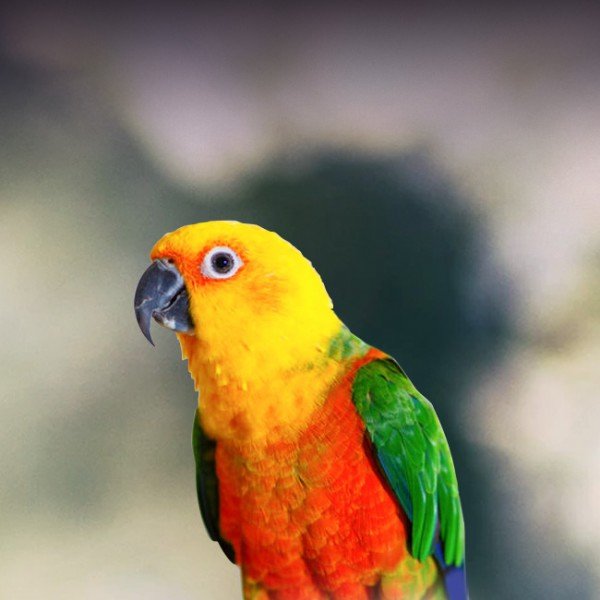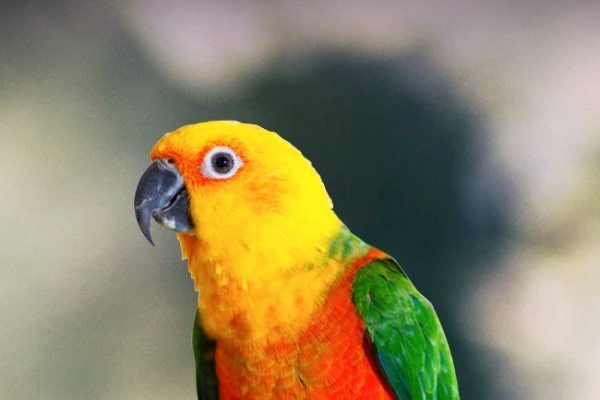
From the adorable Green-Cheeked Conure to the vibrant Sun Conure, there’s a lot to discover about each type. You might be wondering how they differ and which one might be the best fit for you. Whether you’re seeking a lively companion or simply curious about these feathered friends, I’ll guide you through the different types of conures and what makes each one special.
Green-Cheeked Conure
The Green-Cheeked Conure is often considered one of the best starter birds due to its friendly nature and manageable size. These little guys typically grow to about 10 inches long, making them easy to handle and care for. Their green plumage contrasts beautifully with their cheek patches, which can be shades of blue, red, or even yellow.
Here’s the thing: Green-Cheeked Conures are known for their playful and affectionate personalities. They love to interact with their owners and can even learn to mimic sounds and words. However, they thrive on social interaction, so if you’re going to be away a lot, you might want to consider getting them a buddy or two.
Feeding these conures is quite straightforward. A diet of high-quality pellets, fresh fruits, and veggies will keep them happy and healthy. Plus, they’re notorious for their mischievous behavior! Expect your Green-Cheeked Conure to show off its acrobatics and charm as it swings from toys or explores its surroundings.
Sun Conure
Now, let’s talk about the Sun Conure—the colorful showstopper of the conure family. With their bright yellows, oranges, and just a hint of green, these birds look like a little piece of sunshine! Sun Conures can grow up to about 12 inches in length and are known for their loud, cheerful calls.
What sets the Sun Conure apart is its outgoing and affectionate nature. Honestly, if you’re looking for a bird that enjoys being the center of attention, this is it! They thrive on interaction and can become very attached to their owners, often seeking out snuggles and playtime.
But, here’s something to keep in mind: their vocalizations can be quite loud. If you live in an apartment or prefer a quieter household, you might want to consider whether the lively chatter of a Sun Conure fits your lifestyle. They also require plenty of mental and physical stimulation to keep their spirits high, so be prepared to invest time in play and training sessions.
Jenday Conure
The Jenday Conure is another vibrant choice, known for its bright yellow and green plumage, often with touches of orange on the wings. Similar in size to the Sun Conure, they also grow to around 12 inches. Jendays are playful and curious, often getting into all sorts of antics that will keep you entertained.
One of the standout features of these birds is how quickly they can learn tricks and commands. If you enjoy teaching pets, the Jenday Conure will happily rise to the challenge. They thrive on positive reinforcement, so a little treat can go a long way in training sessions. Plus, their bold personalities mean they might even steal the show during family gatherings!
Feeding a Jenday Conure follows the same principles as other conures: a balanced diet of pellets, fresh produce, and the occasional nut. Just be mindful of their tendency to get into mischief; you might find them exploring places you never thought a bird would go!
Black-Capped Conure
The Black-Capped Conure is a bit less flashy compared to its brighter cousins, but it makes up for it with its charming personality. With a body size similar to a Green-Cheeked Conure, they typically measure around 9–10 inches long and feature a striking black head with a green body and a splash of yellow on the tail.
These birds are known for their friendly, yet slightly quieter demeanor. They’re great for those who might not want as loud a companion as some of the other conures. You might be wondering where the fun is in that, but trust me, they are just as playful and silly as their more colorful relatives.
Black-Capped Conures can also be quite affectionate with their owners, often forming strong bonds. They enjoy socializing, but they won’t mind if you’re looking for a more chill bird. Just like the others, they also require a hearty diet and plenty of stimulation to keep them happy.
Cherry-Headed Conure
If you’re a fan of unique personalities, the Cherry-Headed Conure might just steal your heart. These conures showcase a vibrant color palette with cherry-red heads and a mix of green and yellow on their bodies, making them look distinctively colorful. They typically grow to about 12 inches long and are known for their spirited nature.
What makes Cherry-Headed Conures stand out is their vocal ability. They can be quite chatty, adding a lively atmosphere to your home. However, their vocalizations aren’t as loud or shrill as those of some other conures, which many owners appreciate.
When it comes to their care, Cherry-Headed Conures do best with a varied diet that includes pellets, fruits, and vegetables. These intelligent birds need plenty of toys and activities to keep them from getting bored, so be ready to provide a fun environment for them to thrive.
Choosing a conure is like picking a new friend; each type has its unique quirks and personality traits that make them special. Whether you’re drawn to the playful Green-Cheeked Conure, the vibrant Sun Conure, or the charming Black-Capped Conure, there’s a conure out there for you.
Remember, conures are social creatures that need interaction, mental stimulation, and a healthy diet to thrive. If you’re ready to welcome one of these delightful birds into your home, you’re in for a real treat. So, what are you waiting for? With their charming calls and playful antics, a conure could be the perfect feathered companion you never knew you needed!

